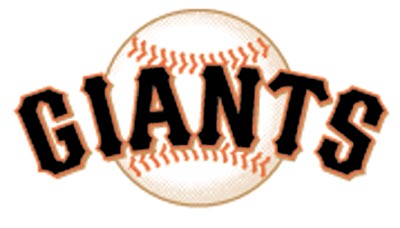His legs are heavy, his bat slow, and the sunlight has left his
game. He’s old in baseball years, the latest convenient symbol of a
team too often dependent on those whose talents are ravaged by
time. Giants fans coming to the ballpark Friday night will peep in
the direction of Miguel Tejada and wish their team had a promising
young shortstop already in place, that this relative geezer was not
a necessity. A’s fans, at the same yard, will gaze at the shortstop
and reminisce, recalling the Miggy they once knew and enjoyed,
wishing he never left.
OAKLAND
His legs are heavy, his bat slow, and the sunlight has left his game.
He’s old in baseball years, the latest convenient symbol of a team too often dependent on those whose talents are ravaged by time.
Giants fans coming to the ballpark Friday night will peep in the direction of Miguel Tejada and wish their team had a promising young shortstop already in place, that this relative geezer was not a necessity.
A’s fans, at the same yard, will gaze at the shortstop and reminisce, recalling the Miggy they once knew and enjoyed, wishing he never left.
They remember when he was the jewel of Oakland’s minor league system, a dirt-poor Dominican kid whose raw gifts were the talk of baseball. Many followed his progression, watching him develop, awaiting his arrival.
With an animated bounce in his step and passion at his back, he showed up in 1997 and soon evolved into a starring role, a lion in the lineup and a firebrand in the clubhouse.
Tejada to some represents what the A’s once were, a swaggering organization that scouted and cultivated its own marvelous hitters. Miggy followed Jason Giambi, who followed Mark McGwire, who followed Jose Canseco.
Three of the four won MVP awards in Oakland. The fourth, McGwire, introduced himself to baseball by smacking 49 homers as a rookie. All four eventually were tainted by the specter of performance-enhancing drugs.
Tejada is a relic, the last off that defunct assembly line of offensive machines. He was signed by the A’s in 1993, one year after Giambi and three before Eric Chavez, the designated torchbearer until injuries shredded his promise.
That’s five imposing bats — each owns multiple seasons of 30 or more homers and 100 or more RBIs — brought up by the A’s in a 14-year span (1985-98), an impressive feat by any measure, for any organization.
That same organization has produced zero such bats in the 13 years since and now settles for scouring secondhand sources to stock the heart of the order. Gambling on those languishing elsewhere or wheezing toward the finish line, A’s general manager Billy Beane turned to the likes of Erubiel Durazo, Eric Karros and Jack Cust.
That’s also how Billy found Frank Thomas and Mike Piazza, future Hall of Famers hoping to summon one more memorable season. Thomas was a rousing success during his one full season (2006) with the A’s, Piazza an 83-game failure.
Each, however, came determined to confront the two opponents Tejada now faces daily: advancing age and its maddening by-product, diminishing production. A six-time All-Star, Miggy turns 37 next week. His numbers have tumbled recent years; his last 20-homer season was 2006. He is barely a shadow of the player voted A.L. MVP in 2002.
That the Giants accepted this when they signed Tejada to a one-year, $6.5 million deal in December makes a profound statement about their own attempts to develop offensive players.
San Francisco’s system the past 25 years has been no more effective than Oakland’s at finding and promoting productive bats. After Will Clark and Matt Williams in the 1980s, Giants offensive talent supply dried up. General manager Brian Sabean shopped the veterans market, buying up Randy Winns and Michael Tuckers and Moises Alous and Omar Vizquels.
Until Pablo Sandoval made his debut 33 months ago, Bay Area teams had gone a decade without breeding a legitimately dangerous young hitter. As for homegrown MVPs in the Giants lineup, the last was Willie McCovey — in 1969.
Sandoval can become an MVP candidate, as can catcher Buster Posey, brought up to stay less than a year ago. First baseman Brandon Belt, who appeared briefly this season before returning to the minors, is certain to be recalled. With these three, none older than 24, the Giants appear to have discovered a formula.
For now, though, manager Bruce Bochy is forced to use Tejada, perhaps more than he would like.
Tejada was hired to replace the production and presence of Juan Uribe, who last season was second on the team in homers (24) and RBIs (85). He became a free agent and signed with the Dodgers, leaving Sabean scrambling before turning to Tejada.
Miggy has not been anywhere near as good as Uribe, five years younger, was last season. Tejada through seven weeks has struggled to stay above .200 yet remained in the lineup. Pride and desire still bursts through his uniform, just like the old days, but he’s on a pace to hit four homers and drive in maybe 50 runs.
He’s wheezing toward the finish of his career.
There was a time when he was brilliant and captivating, everything the A’s were.
Nowadays, he’s too much of what the Giants once were. And never again want to be.
— Column by Monte Poole, The Oakland Tribune










